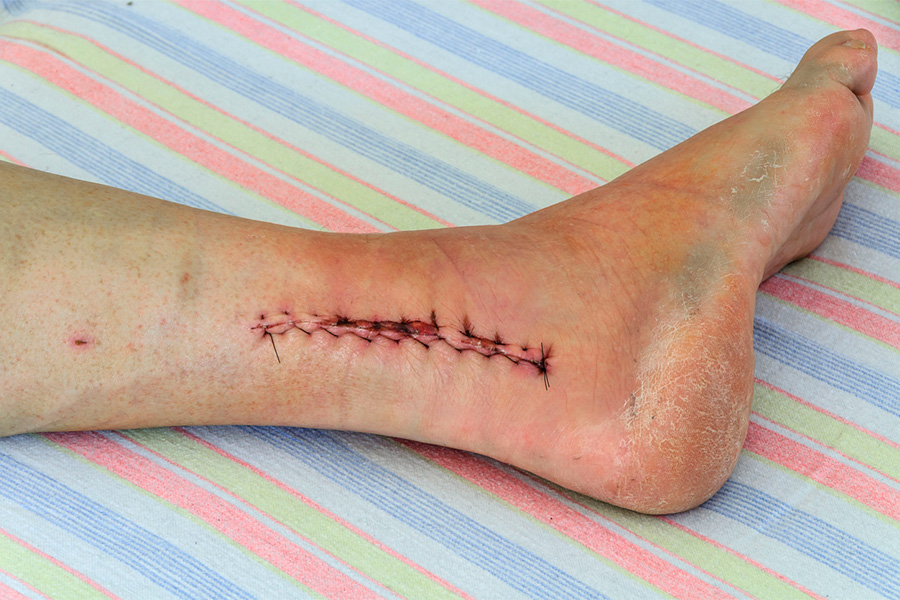Even a minor ankle injury can lead to debilitating pain and reduced mobility. Although ankle pain can often be addressed with conservative treatments such as rest and pain-relief medicine, professional treatment by a foot and ankle doctor may be required for persistent problems or significant pain.
The ankle is a complex joint, where the lower ends of the tibia and fibula bones of the lower leg meet with the talus bone in the upper foot. Numerous ligaments – the tough bands of tissue that connect bones together – and other structures give the ankle its stability, strength, flexibility, and range of motion. Because the ankle supports our entire body weight and enables us to perform a variety of movements, it can be vulnerable to ankle pain and injury.
Let’s talk about how ankle pain can be successfully addressed, and where you can go for an efficient evaluation and treatment that works to quell your ankle pain.
Self-Care for Ankle Pain
For mild ankle injuries, such as sprains, the following self-care measures can help to relieve the pain:
- Rest and activity restriction. This means keeping the weight off of the ankle as much as possible. It will probably involve taking a break from engaging in your normal activities until the pain subsides.
- Ice. Ice or cold therapy can help to reduce ankle pain and swelling. An ice pack should be applied to the ankle for 20 minutes several times a day, but be sure to first wrap the ice pack in a cloth or towel in order to eliminate your chances of getting frostbite due to direct contact. If it feels too cold, take it off; listen to your body.
- Compression. A compression bandage/wrap can help to reduce inflammation and swelling in the injured ankle. Be sure not to wrap the area so tightly that it stifles circulation in the area.
- Elevation. Keeping the ankle elevated can help to reduce swelling and naturally drain any excess fluid away from the ankle. This method harnesses gravity to pull fluids through your circulatory and lymphatic systems naturally.
- Over-the-counter pain relief medications. These can help to reduce pain and inflammation in the ankle area.
The ankle pain, swelling, and stiffness should ease within one or two weeks. If the symptoms are not improving or are becoming worse, see a skilled podiatrist to get a diagnosis and treatment.
When Should I See a Doctor for Ankle Pain?
You should visit a podiatrist for your ankle pain if:
- The pain doesn’t improve within a week or so
- Pain, redness, or swelling around the ankle gets worse
- You have pain or discomfort while resting the ankle area
- There are changes in the appearance of your foot or ankle
- You’re experiencing tingling or numbness in the foot or ankle
- Standing, walking, or weight-bearing is becoming difficult
- You have diabetes
Ankle Pain Specialists in Cincinnati, Ohio
If you have troublesome ankle pain, the foot doctors at Cincinnati Foot & Ankle Care are here for you. Our experienced podiatrists can not only treat your ankle issue, but we can also develop a care plan to help you avoid future ankle injuries.
We have 18 convenient locations across the southwest Ohio area, and we’re sure to have an office near you. To find out more or to request an appointment, call us today at the location nearest you or fill out our online form now to request a consultation. We look forward to seeing you!
Share

Surgeons can provide both surgical and nonsurgical care.

Ankle pain is one of the most common orthopedic complaints.

Less pain, faster recovery, and have a lower risk of complications.


